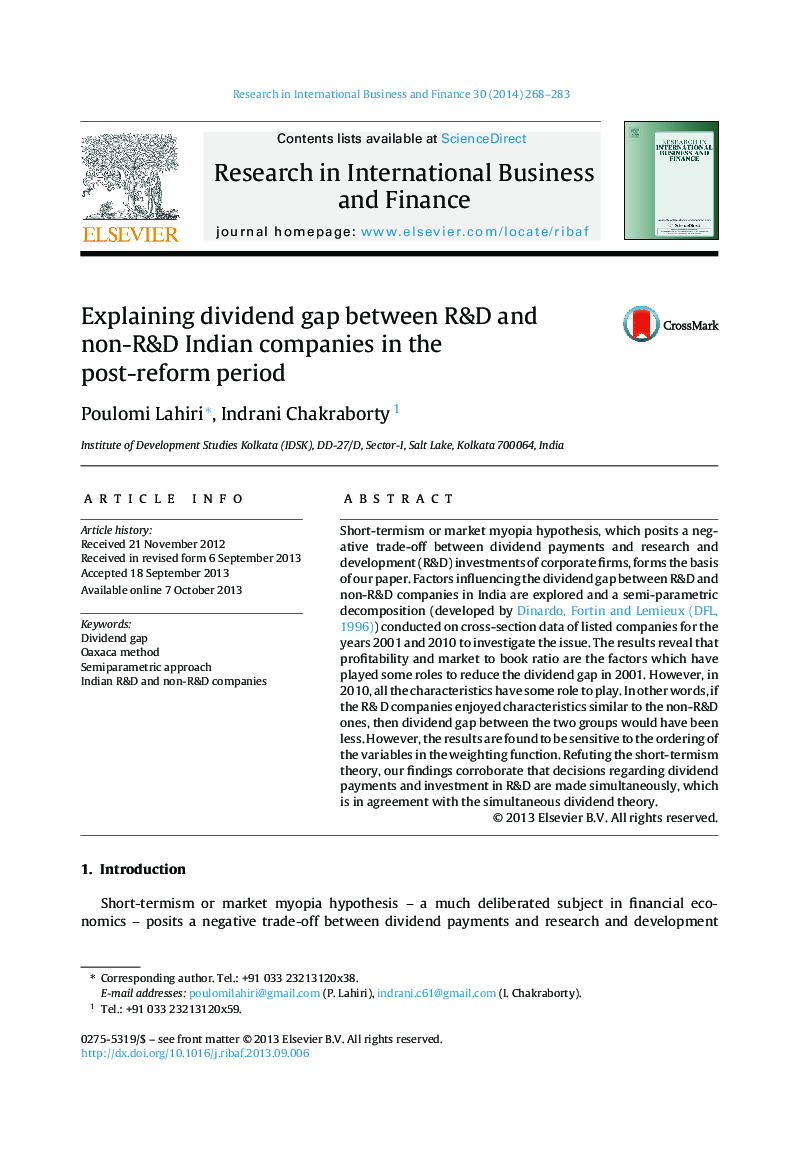| Article ID | Journal | Published Year | Pages | File Type |
|---|---|---|---|---|
| 1002932 | Research in International Business and Finance | 2014 | 16 Pages |
Short-termism or market myopia hypothesis, which posits a negative trade-off between dividend payments and research and development (R&D) investments of corporate firms, forms the basis of our paper. Factors influencing the dividend gap between R&D and non-R&D companies in India are explored and a semi-parametric decomposition (developed by Dinardo, Fortin and Lemieux (DFL, 1996)) conducted on cross-section data of listed companies for the years 2001 and 2010 to investigate the issue. The results reveal that profitability and market to book ratio are the factors which have played some roles to reduce the dividend gap in 2001. However, in 2010, all the characteristics have some role to play. In other words, if the R& D companies enjoyed characteristics similar to the non-R&D ones, then dividend gap between the two groups would have been less. However, the results are found to be sensitive to the ordering of the variables in the weighting function. Refuting the short-termism theory, our findings corroborate that decisions regarding dividend payments and investment in R&D are made simultaneously, which is in agreement with the simultaneous dividend theory.
